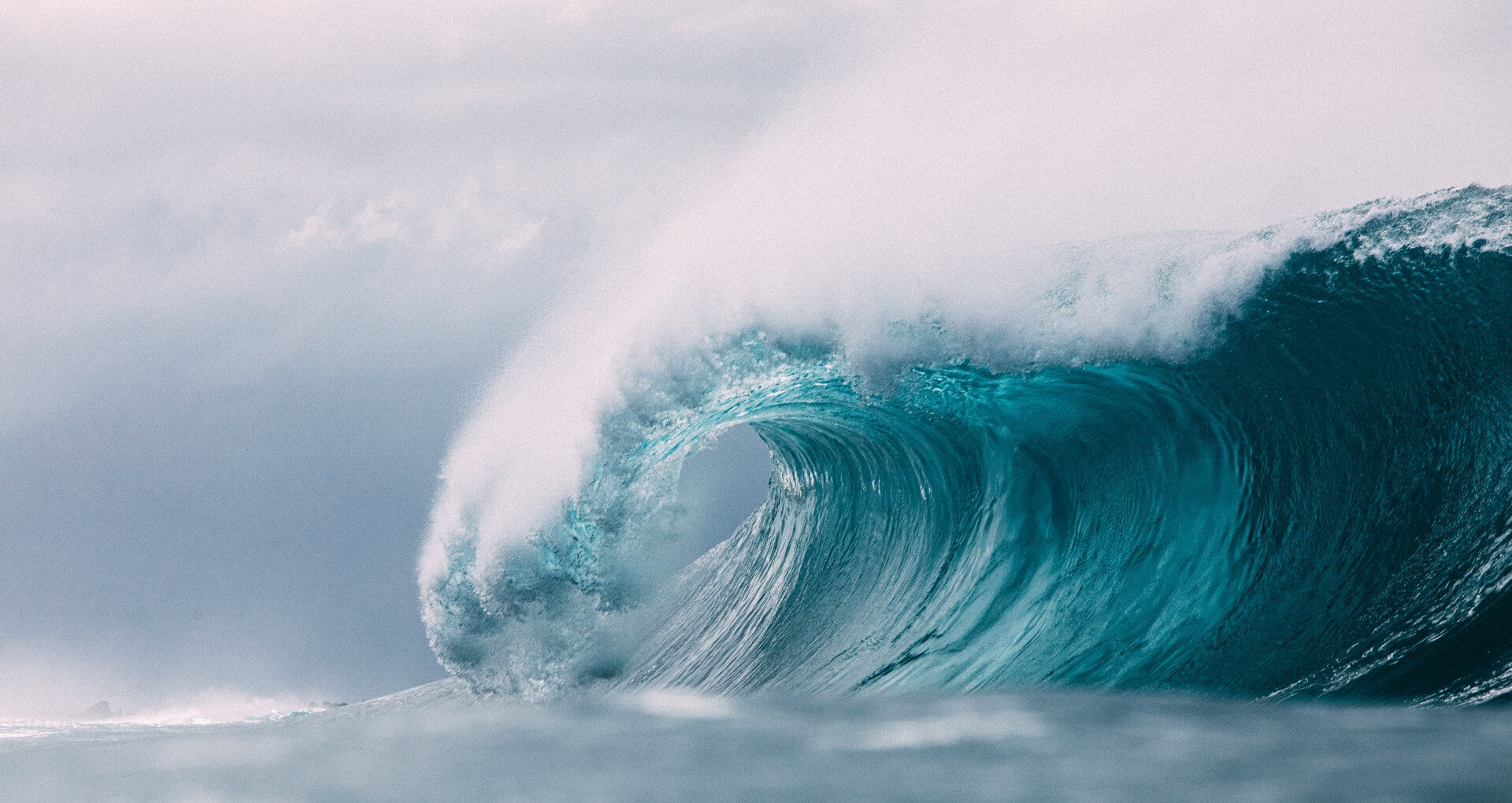AI finds formula for how to predict monster waves

November 20, 2023 | by Nicole Crozier, with files from Michael Skov Jensen, University of Copenhagen
Stories about rogue waves, also called monster waves, have been the lore of sailors for centuries, but for most of history, there was no scientific evidence to prove their existence. In 1995, when a 26-metre-high rogue wave slammed into the Norwegian oil platform Draupner, scientists were able to capture and measure the North Sea monster using digital instruments, marking the first time a rogue wave had been measured. Since then, these extreme waves have been the subject of much study.
We’ve come a long way since then. Now, due to recent research by UVic physical oceanographer Johannes Gemmrich and his collaborators at the University of Copenhagen, we have a better understanding of how rogue waves occur, and a recipe for predicting when. This research, Machine-Guided Discovery of a Real-World Rogue Wave Model, was recently published in the prestigious journal Proceedings of the National Academy of Sciences (PNAS).
“Rogue waves have always been unpredictable, appearing out of nowhere with no warning. Using hundreds of years of data about ocean waves, we’ve been able to map the variables that create rogue waves. We’ve also taken it even further, and with the help of artificial intelligence, have created a mathematical model that can calculate the probability of rogue wave formation,”
- Johannes Gemmrich, UVic physical oceanographer
This research was led by Dion Häfner, then-PhD student at the Niels Bohr Institute at the University of Copenhagen, and currently a Research Engineer at Pasteur Labs. Gemmrich is second-author on the paper.
Rogue waves happen every day
Rogue waves weren’t the only thing that was big in this study—so was the amount of data collected. To develop their model, the researchers combined available data on water depth and the sea state, which includes surface wave conditions such as wave height, length and steepness. These data were collected from buoys in 158 different locations around US coasts and overseas territories that collect data 24 hours a day. All told, the data set – from more than a billion waves – contains 700 years worth of wave height and sea state information.
Gemmrich and team analyzed the many types of data to learn more about rogue waves, defined as waves that are at least twice as high as the surrounding waves. Using machine learning, they transformed the data into an algorithm that was then applied to their dataset.
"Our analysis demonstrated that abnormal waves occur all the time. In fact, we registered 100,000 waves in our dataset that can be defined as rogue waves. This is equivalent to around one monster wave occurring every day at any random location in the ocean. However, they aren’t all monster waves of extreme size," says Gemmrich.
Artificial intelligence as a scientist
In this study, the researchers used artificial intelligence (AI) to help analyze the large dataset. They used several different AI methods, including symbolic regression, which gives an equation as output, rather than just returning a single prediction, as traditional AI methods do.
By examining data from more than a billion waves, the AI has analyzed its own way into finding the causes of rogue waves and condensed it into equation that describes the recipe for a rogue wave. The AI learns the causality of the problem and communicates that causality to humans in the form of an equation that researchers can analyze and incorporate into their future research.
University of Copenhagen PhD student Dion Häfner was responsible for all of the artificial intelligence work in this paper.
Finding the cause
This new study breaks with the common perception of what causes rogue waves. Until now, it was believed that rogue waves were created when one wave slowly extracted energy from another, resulting in one big wave.
This study establishes that the most dominant factor in the materialization of these freak waves is what is known as "linear superposition". The phenomenon occurs when two or more different wave systems briefly align and combine to create extremely large waves.
"If two wave systems meet at sea in a way that increases the chance to generate high crests followed by deep troughs, the risk of extremely large waves arises. This is knowledge that has been around for 300 years and which we are now supporting with data," says Häfner.
Safer shipping
The researchers' algorithm is good news for the shipping industry, which at any given time has roughly 50,000 cargo ships sailing around the planet. With the help of the algorithm, it will be possible to predict when the "perfect" combination of factors is present to elevate the risk of a monster wave that could pose a danger for anyone at sea.
"As shipping companies plan their routes well in advance, they can use our algorithm to get a risk assessment of whether there is a chance of encountering dangerous rogue waves along the way. Based on this, they can choose alternative routes," says Häfner.
Gemmrich is currently implementing this algorithm in the wave forecast for the north Pacific.
“Combined with the prediction of wave height, this information will provide a risk assessment for encountering dangerous rogue waves in the next few days. Shipping companies can use this information to plan safe routes,” he says.
The algorithm is publicly available, as are the raw weather and wave data deployed by the researchers. Interested parties, such as public authorities, shipping companies and weather services, can easily begin calculating the probability of rogue waves. This study of monster waves could have a monster impact.
